Sprint 3

Our original goal for sprint 3 was to create a new box and mount the obstacles that we had already constructed in the box. After spending some time thinking about how to mount the obstacles, we realized that it would be a much better idea to create all eight obstacles first and then figure out how to mount all of them at once. We spent this sprint designing and fabricating all eight obstacles as well as working on the start and stop conditions for our game..
The Game Thus Far
Minimum viable game
A two-player cooperative with with four obstacles per player.
Objective
Two players must work together to get the ball to the end of the obstacle course
Scoring
The game is scored based on how quickly the players can move their balls through the obstacles
Obstacles Designed
Uncovered tilt maze, Covered Tilt Maze, Popper, Weeble Wobble, Ball Pass, Swishel Swashel, Lever Toss, Shoot the Moon
Obstacles Built
Uncovered tilt maze, Popper, Weeble Wobble, Ball Pass
Theme
SPACE
Name
Lunacy
Concept Map
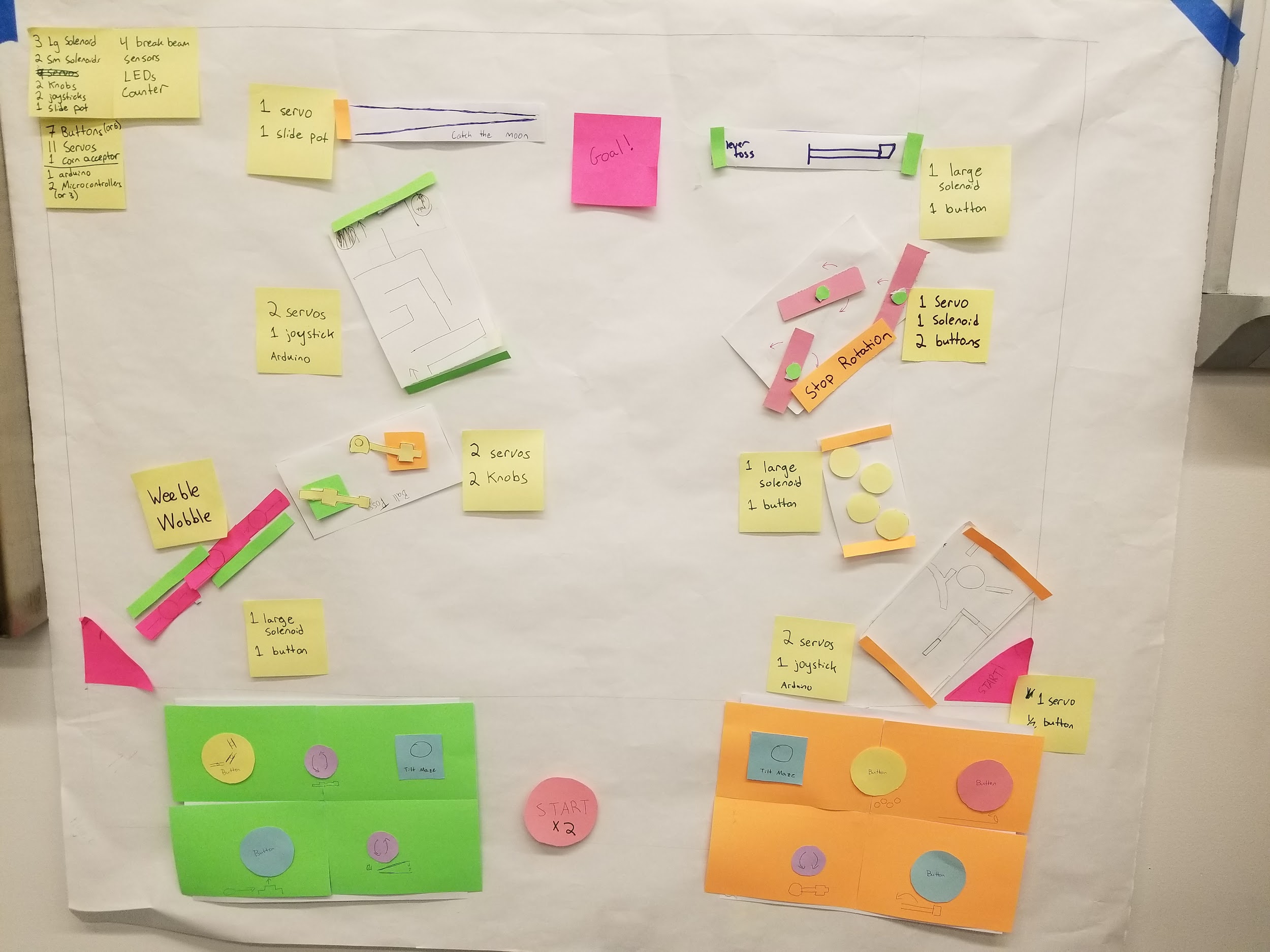
During this sprint we deiced to change the third obstacle on the right side from a pin ball like obstacle to a rotating ramp obstacle with a popper in the middle (we will refer to this obstacle as swishel swashel in the future). There were no other changes made to the concept map during this sprint
Right Side Obstacles
Uncovered Tilt Maze
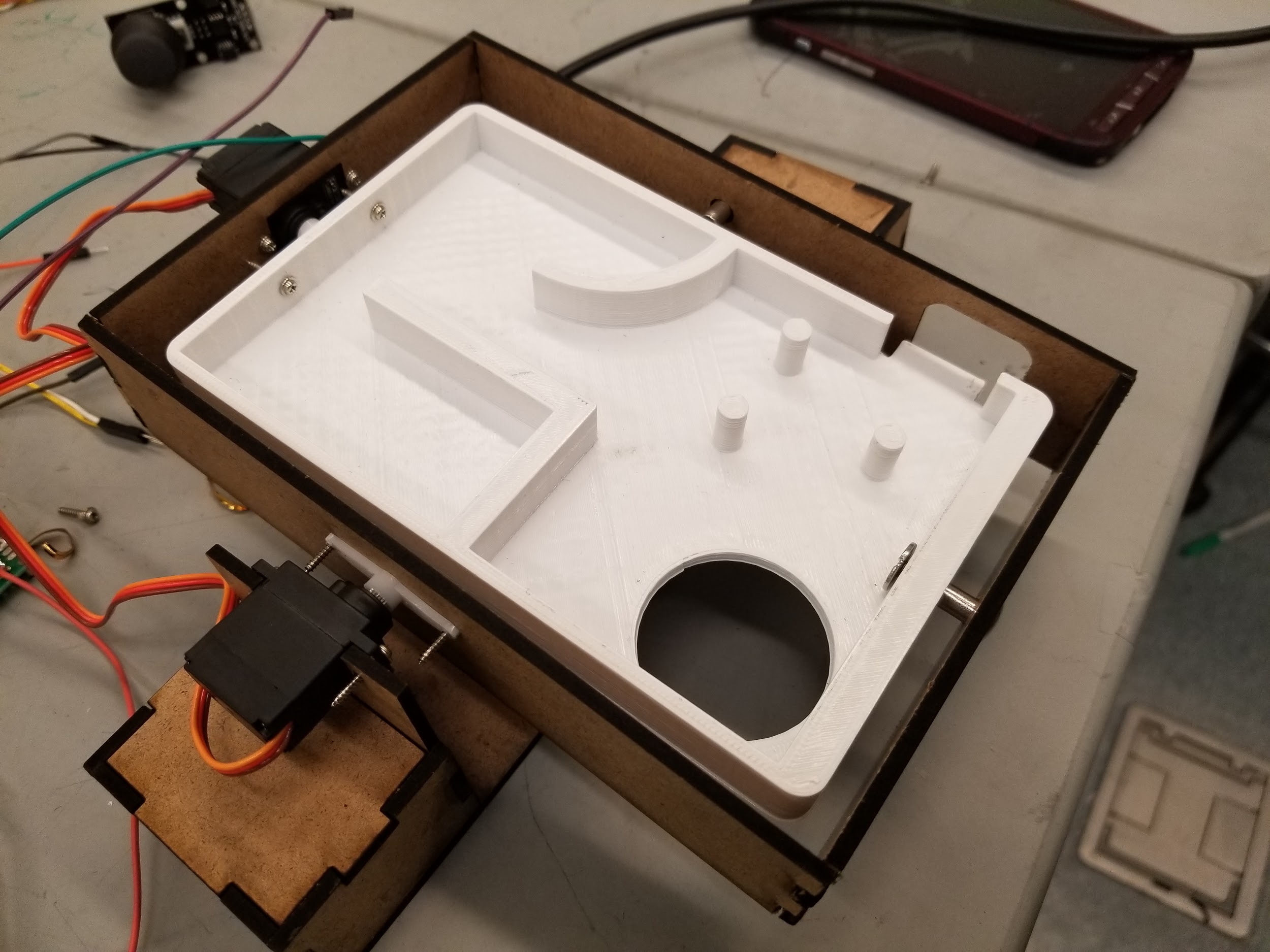
In this obstacle, the player uses a joystick to control the tilt of the maze. The player has to navigate from one side to the other without getting stuck or falling into the black hole.
Popper
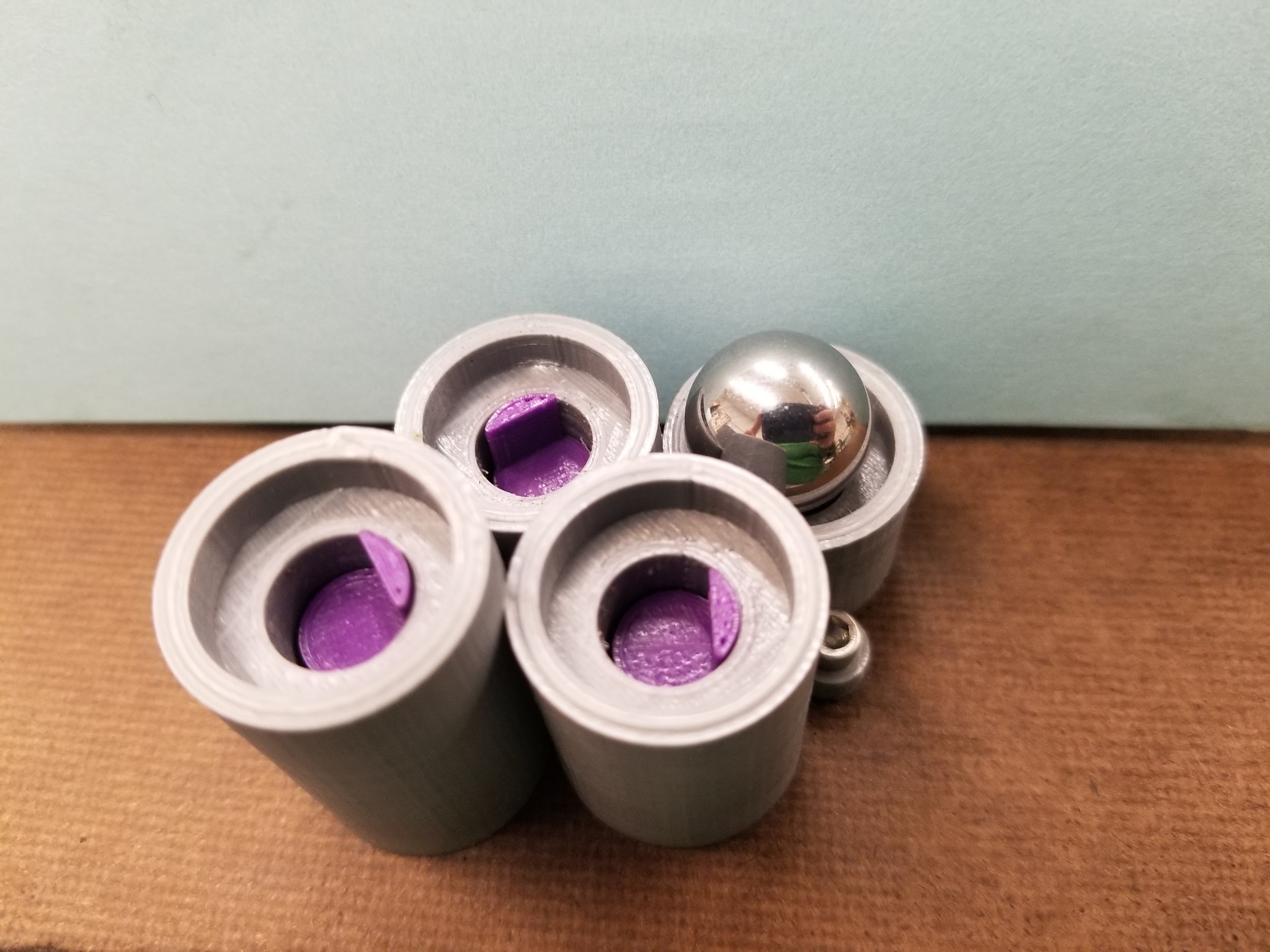
The player has to pop the ball from one level to the other to pass through this obstacle. This obstacle has a corresponding force gauge that determines how hard the pop will be when the player presses the button. If the player presses the button at the wrong time, the ball either won't pop high enough to get to the next obstacle, or will fly off the obstacle.
Swishel Swashel
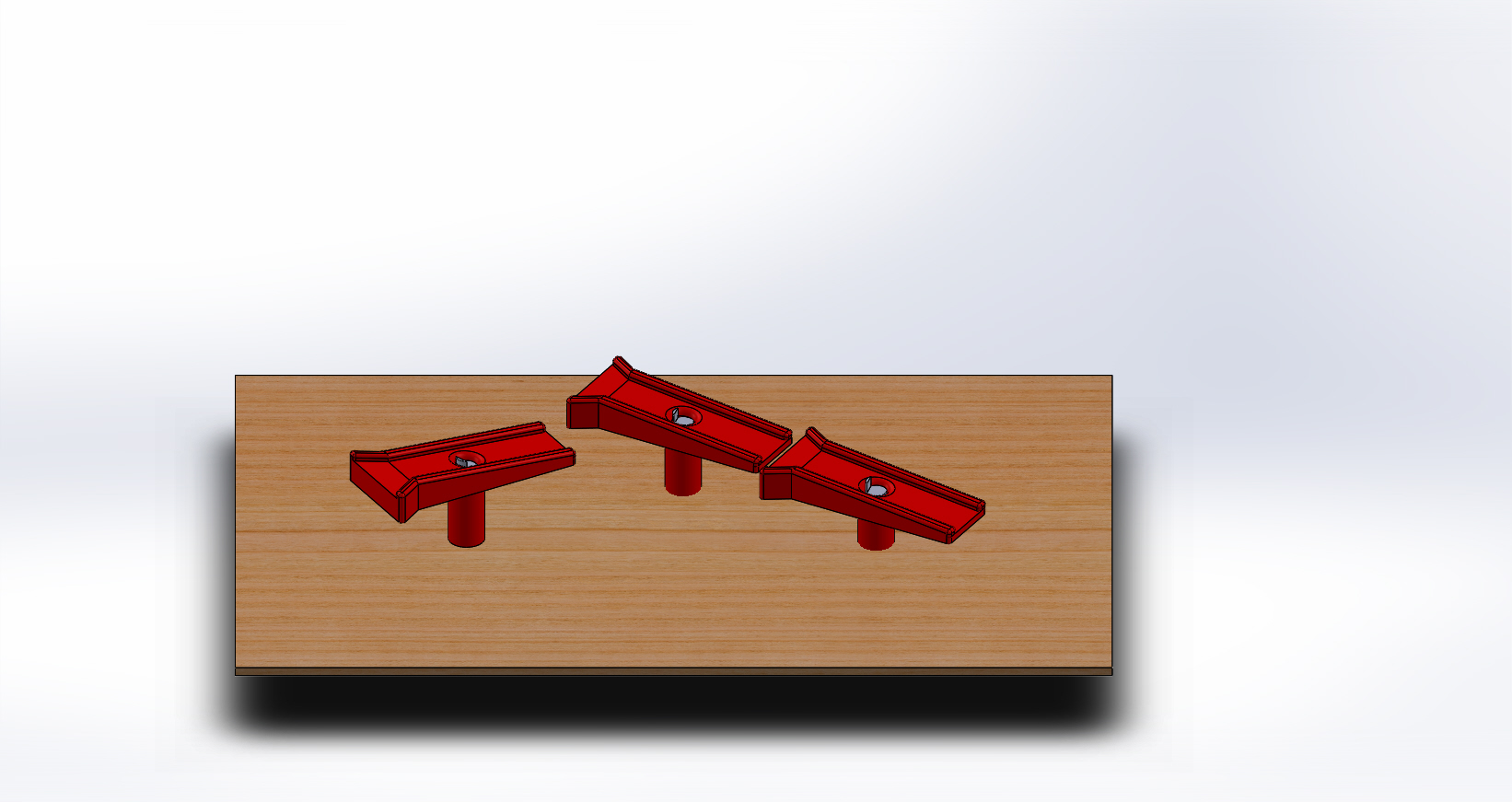
This is a cooperative obstacles. The three ramps on swishel swashel rotate back and forth. The goal is to get the ball from one side of the ramps to the other. Initially, the ball rolls onto the first ramp and get stuck in the hole in the middle of it. When the second ramp lines up with the first ramp, one player has to press a button to momentarily stop the rotation, and another player has to press another button at the same time to actuate a solenoid which pops the ball out of the hole so that it rolls down the ramp and onto the next one. This process continues until the ball is off of the obstacle.
Shoot the Moon

This obstacle is also commonly referred to as Catch the Moon. A servo controls how far away the two rods are, and the player has to use a slide potentiometer to move the rods to get the ball from one side to the other. There is a slight incline from the start to the end, so that the player has to move the rods to get from one side to the other.
Left Side Obstacles
Weeble Wobble

In this obstacle, the player presses a button which actuates a solenoid and switched the orientation of the ramps. The player has to time button presses so that the ball rolls along the ramps without flying off or moving backwards. This is the first obstacle in the traditional screwball scramble game.
Ball Pass
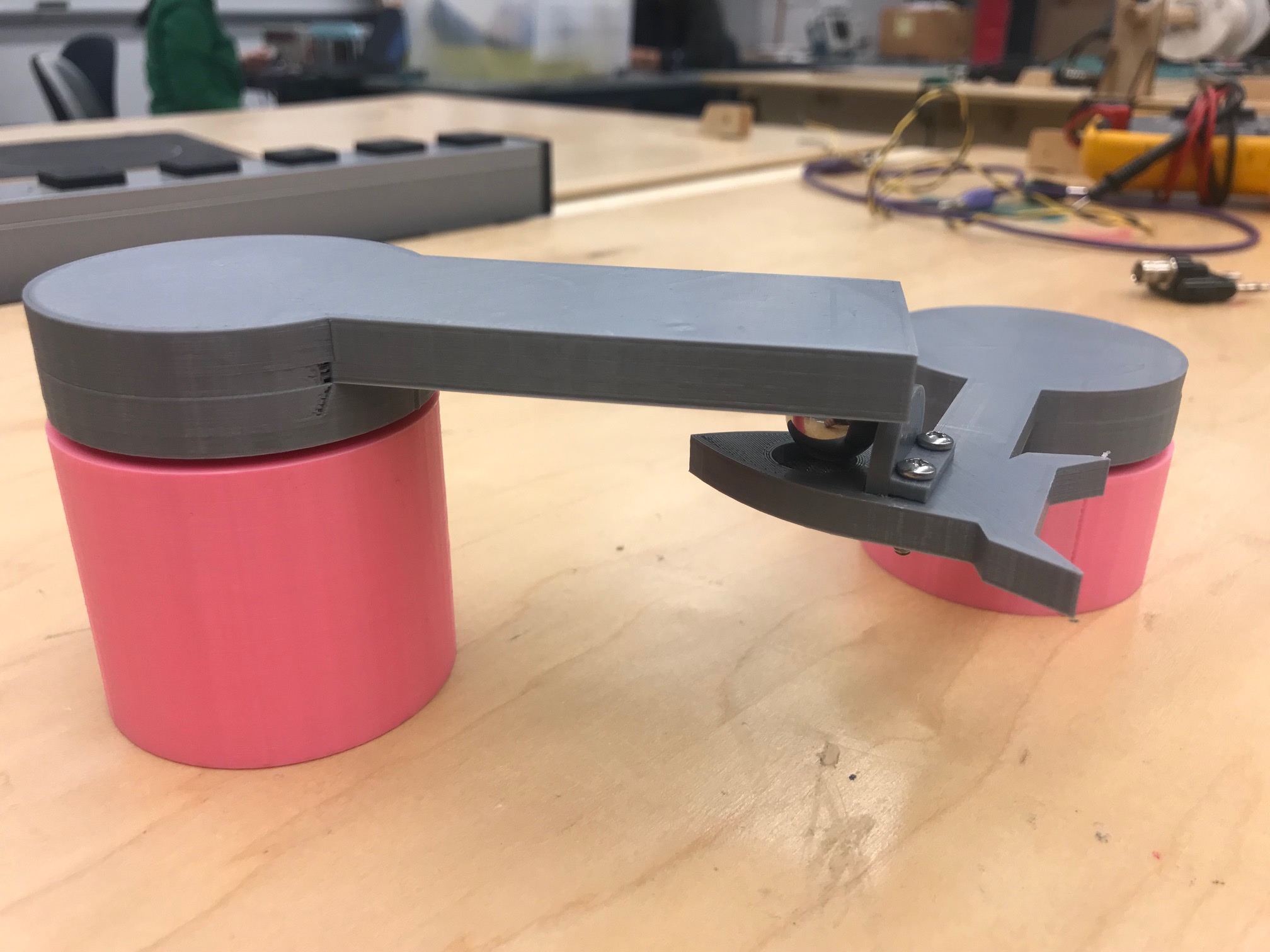
Ball Pass is the second cooperative obstacle. Each half rotates and is controlled by a potentiometer, and each player has control of the rotation of one half. The players have to pass the ball from the magnetic arm to the space ship arm and then on to the next obstacle.
Covered Tilt Maze

Covered tilt maze has the exact same mechanism as uncovered tilt maze, except this time the player can't see inside! The pattern of the tilt maze is printed on the top and the player has to trust their instincts to know where the ball is located. There are no black holes in this tilt maze, but it is possible to hit is dead end if you go the wrong direction.
Lever Toss
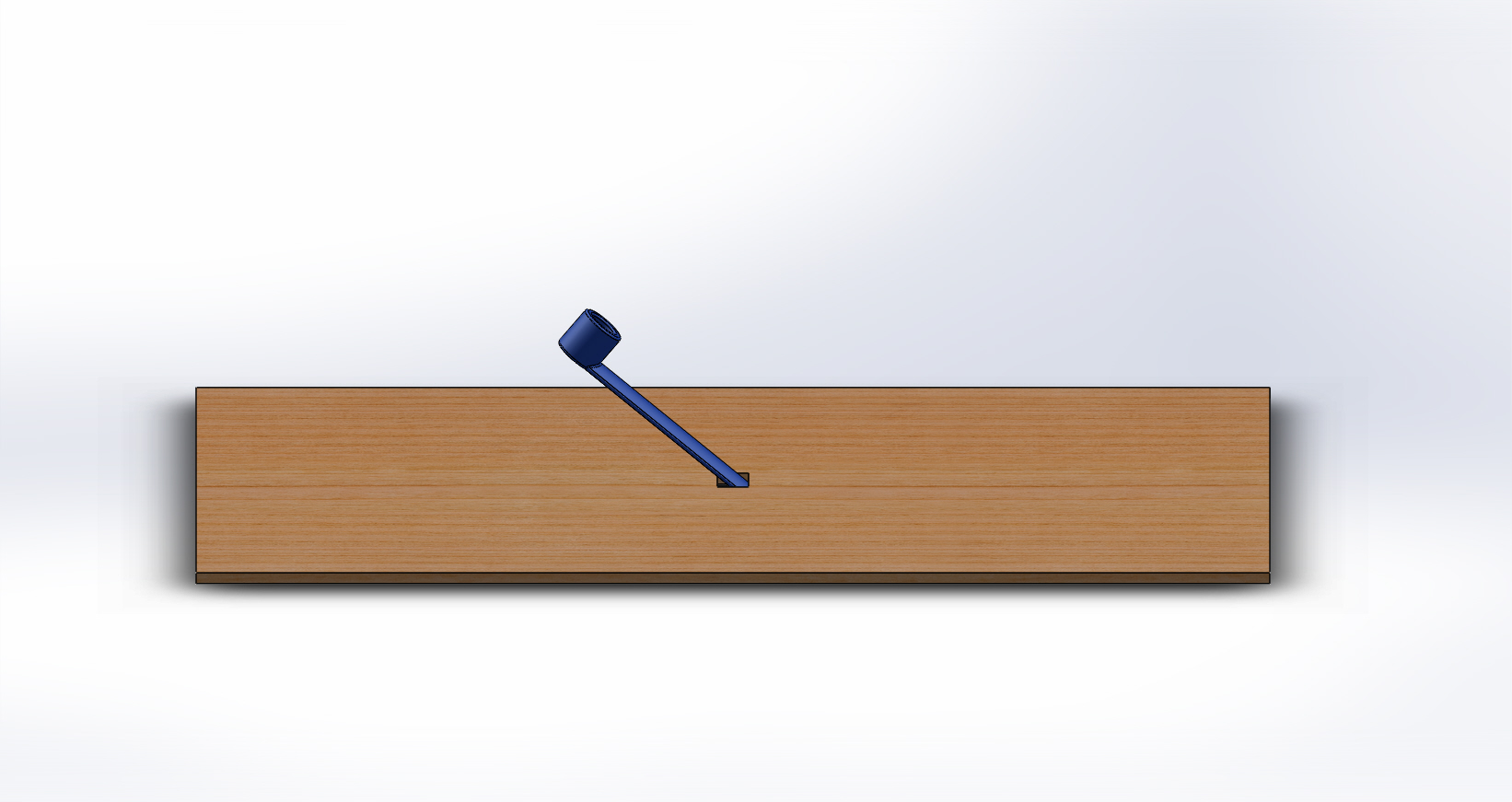
Start and End Conditions
We also designed the start and stop conditions in this sprint. The game is started when a player inserts a coin and presses the start button. At that point, time starts counting down and the ball return doors open. The players have until time runs out to try to get the balls to the end. If one side is won, that side turns off. The game is won completely when both balls have made it to the goal on the other side of the playing field. When time runs out, the start doors will no longer open, but players can continue to attempt to get any ball that is currently in the course to the end. The game fully turns off when either both sides have been completed or when time has run out and both balls have been returned to the ball return ramp either through failure or completion. The wiring of the start and stop conditions got a bit messy, but we tried to solve that problem by labeling each wire.
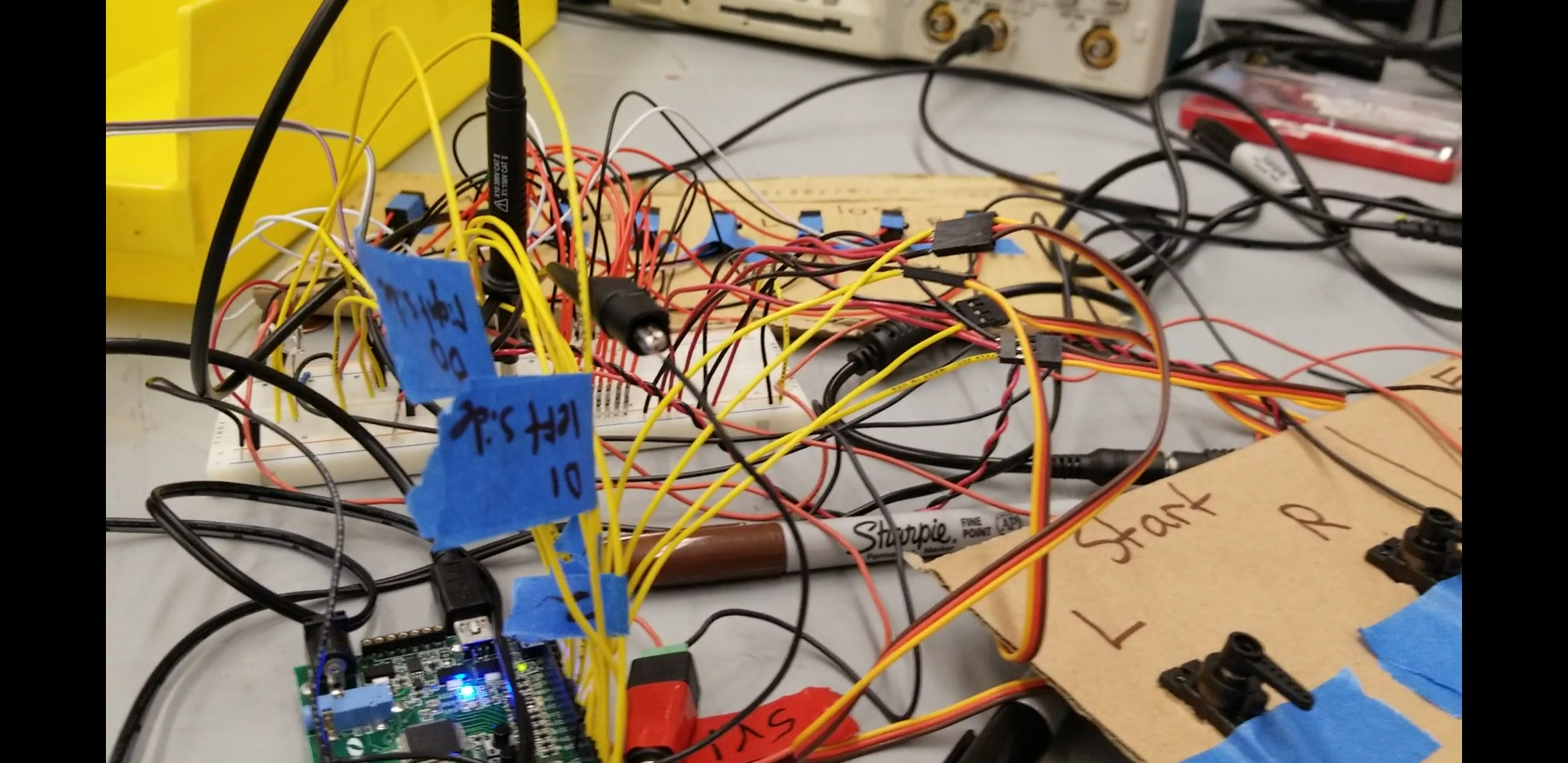
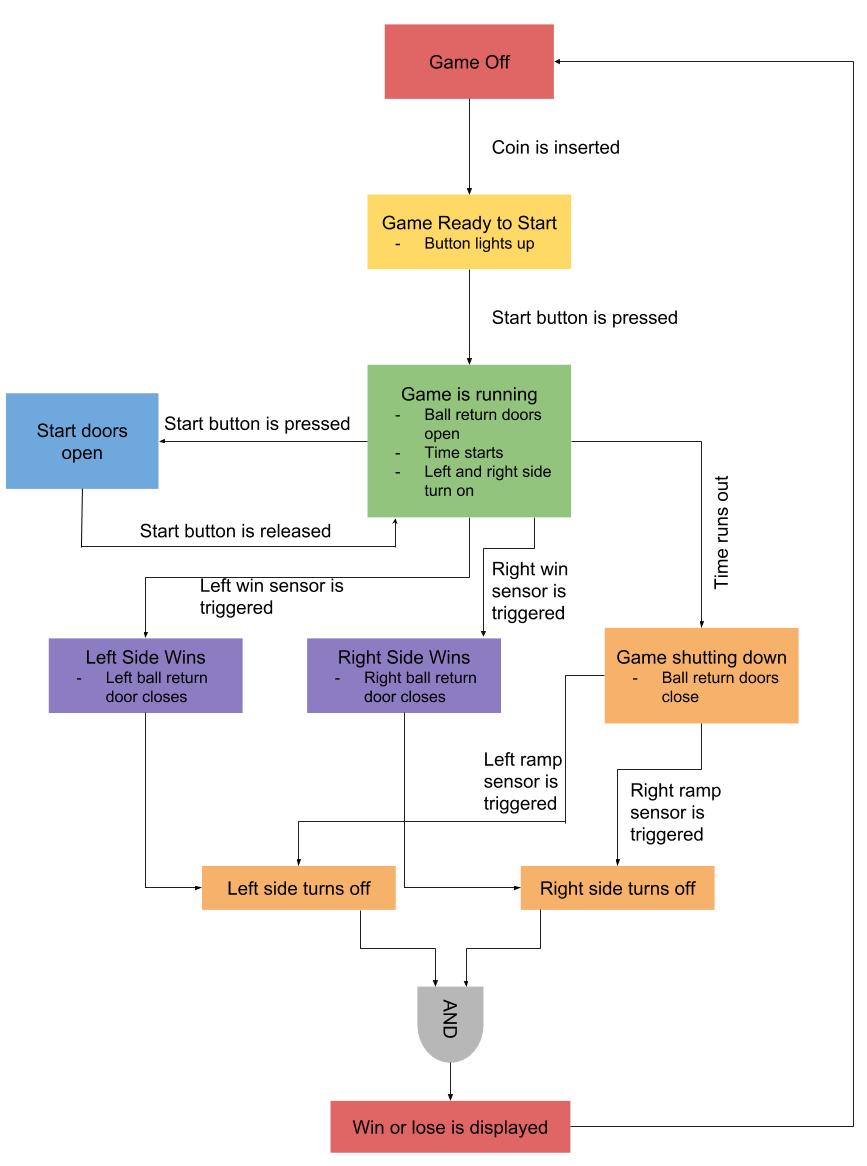
Lessons Learned
- Multiple digital pins on the microcontroller use the same port. They can overwrite each other. When it happens you will be sad.
- Read the reviews before buying anything when shopping online
- When using Arduinos death is inevitable
- We might need to change our name to Screwed Ball Scramble